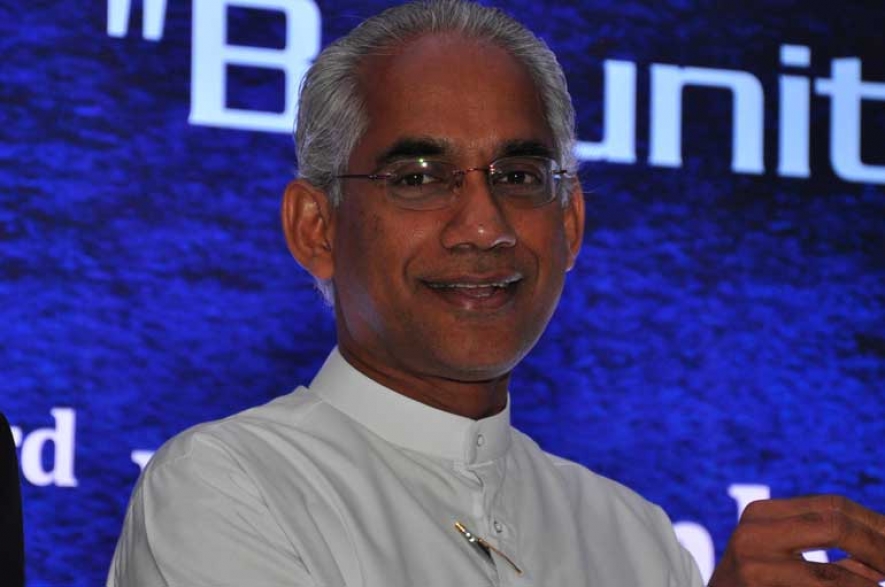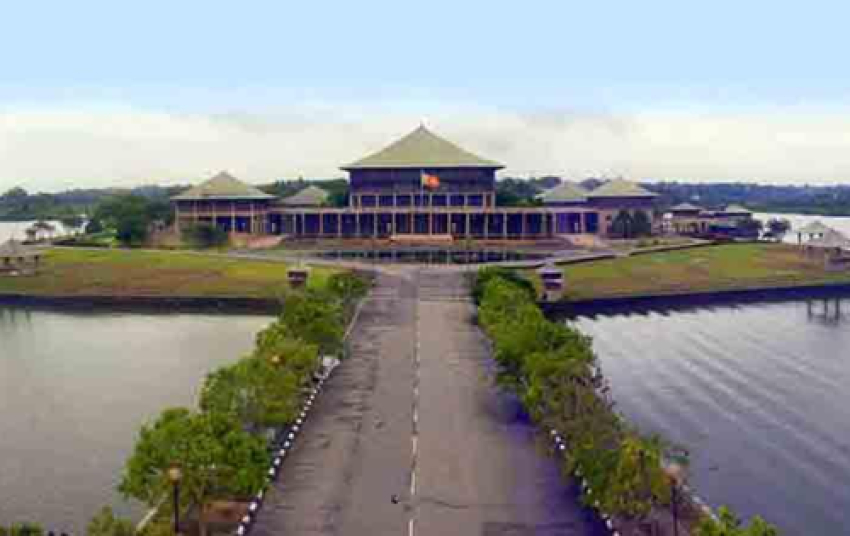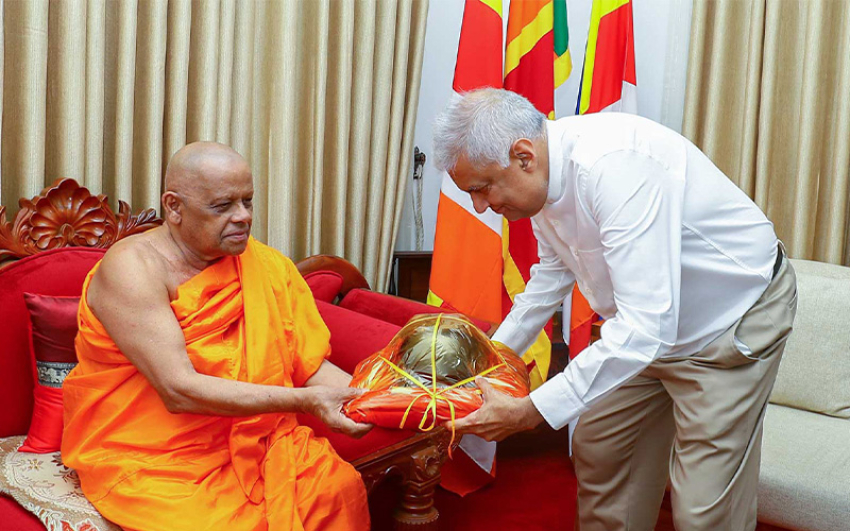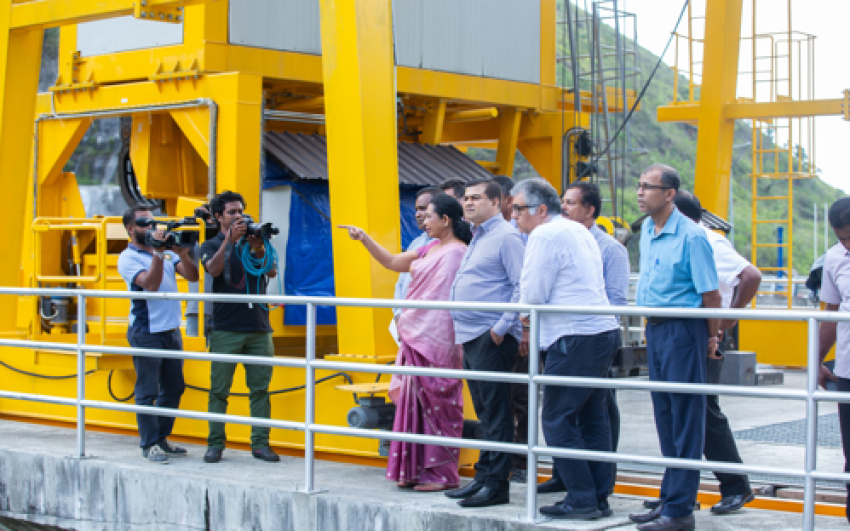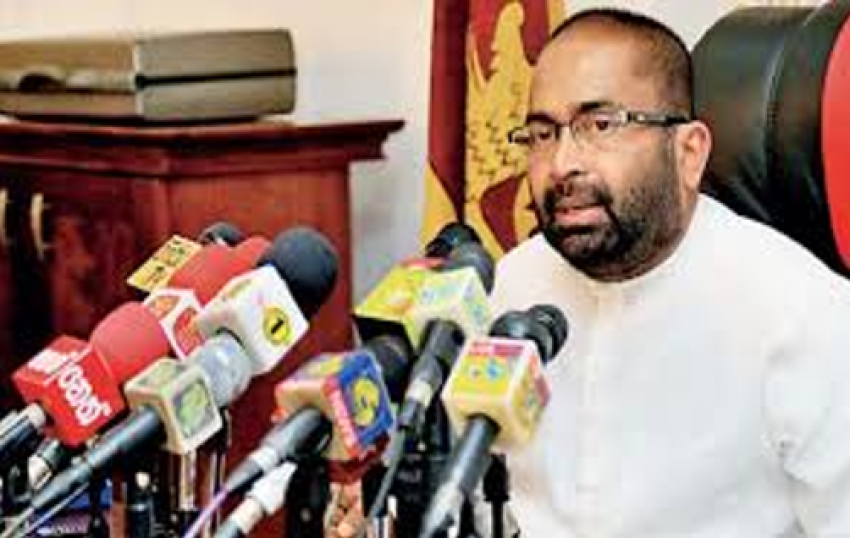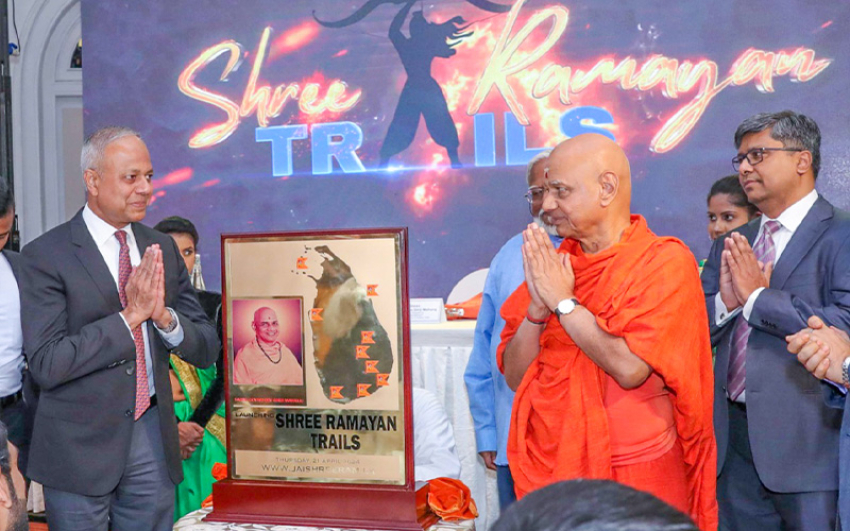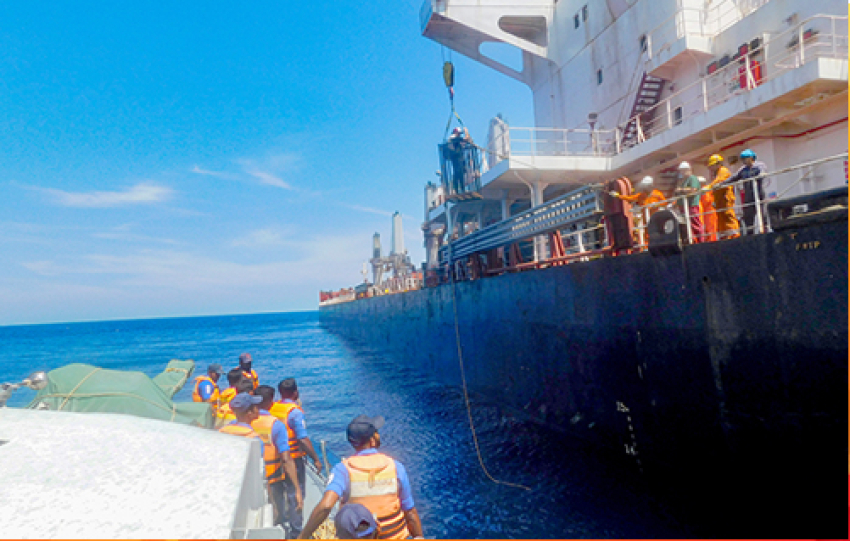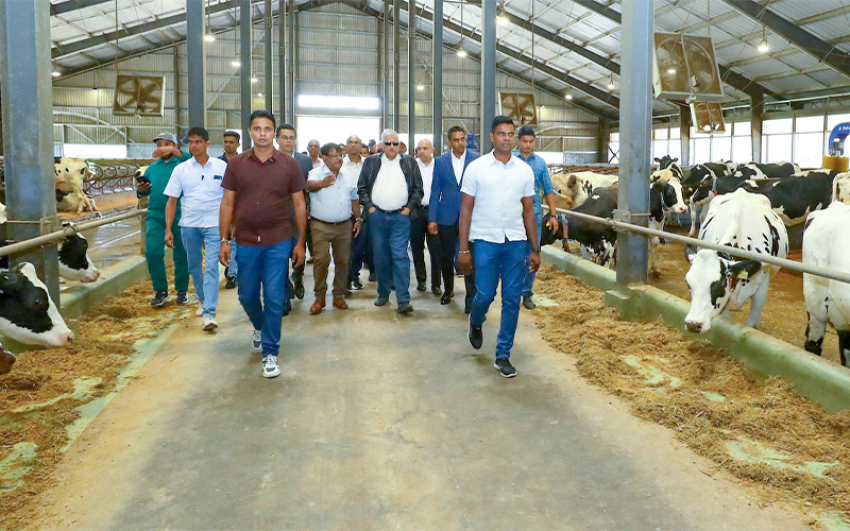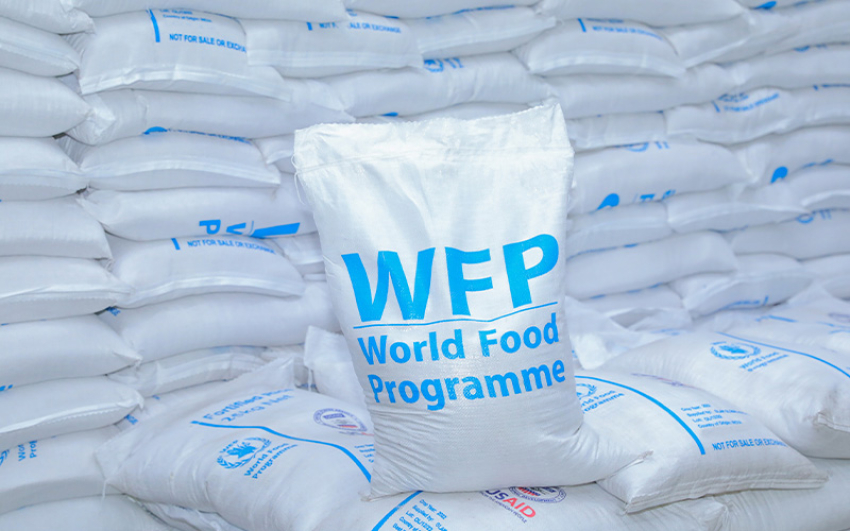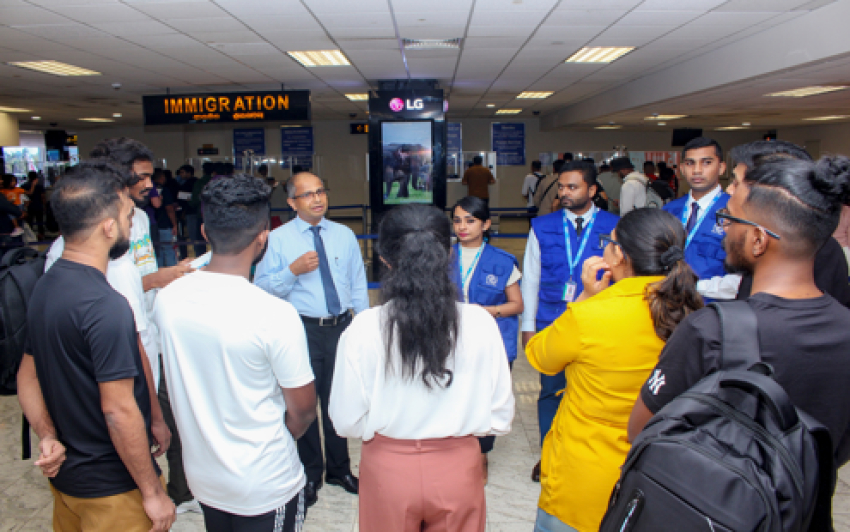Speaker of the House, the Governor of the Central Bank, the Mayor of the City, the Deputy Mayor, members of the Colombo Municipal Council, the Municipal Commissioner, mayors, delegates, officials, ladies and gentlemen. First of all, I want to thank His Worship the Mayor of Colombo Mr.Muzammil for inviting me to be here today and to also speak on the subject of the Future of Cities. I would like to add to what the Mayor, and the former Mayor who is the present speaker of the Parliament have already said, and say welcome to all of you, particularly to thosewho have come from overseas. I am hoping that outside your deliberations you will have some time to look at our city and the actual beauty of our small island. I wish you a very pleasant stay here.
The Portuguese first introduced the name Colombo in 1505. The name is derived from a Sinhala name “Kolon-Thota”, meaning port on the river Kelani. There are obviously many other versions, as you know when you look at history, of how names of places have been derived. Colombo possesses a natural harbour that has been known to Indians, Greeks, Persians, Romans, Arabs and Chinese traders for over 2000 years. The traveller Ibn Battuta visited the island in the 14th century. The Arabs began to settle in Colombo around the 8th century- their descendants now comprise the Sri Lankan Moor community. The Portuguese explorer Lourenço de Almeida arrived in the island in the year 1505. They made a treaty with the King of Kotte, ParakramabahuVIII, which enabled them to trade in cinnamon, in the coastal areas of the island, including Colombo. As you might know Sri Lanka even today is the largest exporter of cinnamon in the world. Within a short time, theyexpelled the Muslim traders from Colombo and built a fort in 1517. The Portuguese exploited the rivalries in the Royal family, and extended their Kingdom.
In 1638, the Dutch signed a treaty with King Rajasinha II of Kandy, assuring the King assistance in the war against the Portuguese, in exchange for the monopoly over the island’s trade of goods. The Dutch captured Colombo in 1656. Although the Dutch initially restored the land to the Sinhalese Kings, they later reversed their position and gained control over the island’s richest cinnamon lands, including those in Colombo. There is still an area of this city, which is an exclusive area, called Cinnamon Gardens- now known as Colombo 7.Colombo served as the capital of the DutchMaritime Provinceseven under the control of the Dutch East IndiaCompany till 1796.
The British captured Colombo in 1796. It remained a British military outpost until the Kandyan Kingdom was ceded to them in 1815, and Colombo was made the capital of the new colony that was British Ceylon. Unlike the Portuguese and the Dutchwho primarily used Colombo as a military outpost, the British began constructing houses and other civilian structures, giving rise to the present city of Colombo. Centuries of Colonial rule had meant a decline in the indigenous administration of Colombo, and in 1865 the British conceived a Municipal Council as a means of training the local population in self governance. And hence, we are the inheritors of one of the oldest local government institutions in the world. The era of colonialism ended when in 1948, Ceylon gained its independence from Britain. A new culture began to take root. Even today, the influence of the Portuguese, the Dutch, and the British is clearly visible in Colombo’s architecture, names, clothing, food, language and attitudes. The city and its people show an interesting mix of European lifestyles, with local customs. Colombo lost its status as the capital city in the 1980s but remains to be the island’s commercial centre.
Now this was the Colombo that I was born to. 40 years ago, as a schoolboy, I used to wield a cricket bat and chase a ball down Duplication Road, which subsequently came to be known as R.A. de Mel Mawatha. A car disturbed our matches once every 30 minutes. Today this road has become one of the busiest roads in Colombo, where a pedestrian cannot cross the road without the fear of being knocked down. I could walk in a carefree manner down to the public school, which was more than a 150 years old, established in 1835, and receive a quality, free education. The middle class child walked hand in hand with the child from the poor garden next-door, unconscious of the class difference. The school and education was a great leveller. We breathed clean air and ate fruits and vegetables that were uncontaminated by chemicals and chemical fertilisers. We celebrated Vesak, the Lord Buddha’s birth, enlightenment and death, by displaying lanterns, lights, and distributing food and drink to the many weary travellers. Eid al-Fitr, and Christmas are celebrated widely, beyond the confines of the Islamic or Christian community. The Sinhala and Tamil New Year is the cultural event that binds Sri Lanka’s diverse cultures. This is the Colombo that his Lordship the Mayor Mohammed Muzammil presides over, and our distinguished Speaker of Parliament once presided over. Many might not know this, but this is also the Colombo I was once invited to preside over, but declined, and subsequently took a seat in Parliament. But now, I must turn to the “Future of Cities”, including the future of Colombo.
I am honoured, your Lordship the Mayor, to be invited to this forum organised by the Colombo Municipal Council, and I commend the CMC for selecting this important topic ‘The Future of Cities’.
The future Sri Lanka can aspire to, as enjoyed in the growing number of ‘smart’ cities around the world, is one that is fuelled by technology and functions with efficiency. The ultimate goal of a city after all is to make life more convenient for its inhabitants. Colombo, amongst other major cities in Sri Lanka, needs to draw a coherent strategy that sets clear priorities for creating a better home for tomorrow. However to do this, we need to involve the public sector, the private sectorand the people. Moreover, Sri Lanka has the opportunity to learn from others’ successes stories, and I am aware that many of you have great stories from your own successes. We can borrow from best practices and avoid the mistakes made elsewhere.
Why focus on cities? According to the United Nations, the world’s urban population will grow from 3.9 billion in 2014 to more than 6 billion by 2045. This will put increased pressure on existing, and already burdened infrastructure. Given the fact that cities already consume 70% of global energy, we have to ensure that future growth is sustainable and also green. Thus cities must become not only smart but they need to begreen cities too. This will require political will and leadership, which this government is committed to provide.
An example of a smart but also green city is Sanford, Florida. According to DNV GL, in the past Sanford used natural gas to dry out biosolids to meet Class A standards for waste. However, by introducing a ‘smart water system’, in this case a ‘Biosolids Gasification System’, Sanford has eliminated the need for natural gas in the biosolid drying process. It is estimated that this will save the city millions of dollars.
Another example of a green city is Copenhagen, Denmark. To save energy, each district has a centralized heating system that takes waste heat from electricity generation and uses it to heat buildings. According to the McKinsey Report on ‘How to Make a City Great’, Copenhagen embarked on a scheme in 2001 to replace its entire water main network over the course of the century, upgrading 1 percent of the network, or 5.6 miles each year. Water leakage is now 5 percent, compared with an average of 20 to 25 percent for many European cities. In fact, Copenhagen was ranked the most sustainable city in Europe 2014 according to Siemens’ European Green City Index.
The mayor of Seoul, Korea, Park Won-Soon once said, "the key to becoming a smart society is 'communication' on a totally different level. For instance, it involves person to person communication, people and agency communication, and citizens and municipal spaces, with human beings always taking the central position in everything".I believe the key to becoming a future city is also communication. Up until last year I was in the Sri Lankan opposition, and the former government embarked on an ambitious program of re-settling lower income earners in high-rise apartments. It was a laudable objective but the methodology was what we questioned. I set myself in opposition to it because I did not see that the people were given the central position in every decision that was made. “A city is characterised by unprecedented levels of sharing” as the then mayor of Seoul, said.Land in Colombo is a particularly scarce resource, however, it should not be viewed as a constraint. According to a mayor of Rio de Janeiro, Eduardo Paes, “it’s not about extending boundaries. It’s about regaining lost space”. In the Great Cities report by McKinsey, it is given that“Singapore approaches the problem methodically, identifying plots that are underutilized with a view to encouraging high-density development wherever possible. New York encourages the refurbishment of existing housing units, sometimes splitting them into smaller units or studios and building on rooftops”. In Colombo, those in close proximity to each other can easily share common facilities. Common resources, whether parks, or pools or community spaces, can make life better. We want to give Sri Lankans a wholesome life, a life in which they can read, or just ‘hang out’ in public places in an environment free of pollution. Ultimately, cities are about living well.
Sri Lanka must reap the dividends of peace, and create the cities we could only dream about in the past- a city where people needn’t worry about the safety of their children, and where pedestrians have ample space to navigate the streets. With regard to Colombo, I do however want to emphasise that while we rapidly progress with technology and investments, it is vital that we preserve the diversity and cosmopolitan nature of this city. By and large, Colombo has for the last 150 years been a harmonious melting pot, home to various ethnicities, religions and cultures. We value that diversity and want to preserve it.
Rather than trying to run before we can walk, we must use the tools we have at our disposal to make Sri Lankan cities both smart and futuristic. For example, almost every Sri Lankan owns a mobile phone. We have a population of 21 million and we have as much or more mobile phones. We could use mobiles to protect the vulnerable, improve security and promote interactive politics. To build on this vision, we can borrow from the proposed Smart Seoul 2015 model, South Korea’s strategic plan for the informatization of the city. For example, similar to developments in Seoul, Colombo and indeed the whole island are working towards establishing freely available WiFi and hotspots throughout the city.
In order to ‘bridge the digital divide’ Colombo should pursue educating the elderly asSri Lanka has a fast ageing population. We have the income of a lower middle-income country, and the social indicators of a highly developed country. Therefore we have to bridge the digital divide among the elderly, the low-income families; and the disabled, on technology and smart devices. This is important for inclusive development, to ensure that these segments of society are not left behind as the rest of the population progresses with new and smart infrastructure.Technology can be used to protect the disadvantaged too. Healthcare can benefit from motion detectors, which provide monitoring services for senior citizens or those with disabilities.
For about a year, my mother was in a suburb of Los Angeles, as she was receiving medical attention. You could see how well the elderly in the city were cared for. It was people-centric development. The families didn’t have to be present, because the city took good care of the elderly. We were earlier talking about smart cities,I am now talking about future cities that go beyond smart cities.
We will need smart administration.With smart administration, the public could benefit from increased security features. Following the model of many developed Asian countries, a safety service could be provided through mobile devices creating a social safety net through which parents can keep track of their children. Sri Lanka has undergone destructive natural disasters. The one you would remember most is the tsunami of 2004.Many lives could have been saved if those in the area had been warned in time. As we move forward, disaster warnings and notifications would help reduce casualties in the event of a natural disaster. We are really thankful that we have had no such major disaster in our city.
However, while we talk about the digitisation of cities, we must first address a long-standing and glaring deficiency in our urban as well as rural areas. Public transportation in Sri Lanka is entirely out-dated and needs to undergo genuine modernization as soon as possible. I wish that this forum could have also had the benefit of people like Dr.Gunaruwan and Professor AmalKumarage from the University of Colombo and the University of Moratuwa. The previous government poured in millions to building second and third ports and airports yet failed to make life better for the ordinary man who takes an overcrowded bus or goes on an overcrowded train to work everyday. A seemingly simple improvement could be the introduction of a timetable according to which public transport runs. By installing GPS systems on buses, the public could keep track of their routes, arrival times and estimated time to destination. This would save people anxiety over bus delays. Considerable amounts of time are wasted.People should no longer have to stand waiting, often in monsoonal times such aswhat we are experiencing now, for buses to come at times that they can only just guess.
Once a week or so I travel by train from my ministry office at the World Trade Centre to my political office in the suburbs of Colombo, in Moratuwa. The train journey takes me 40 minutes, while the road takes me 2 hours at peak time. However, the train is crowded, difficult to breathe in, impossible to do work from, and threatens the dignity of women who have to travel on it. Little has changed in the train, from the train I travelled on over 4 decades ago as a child. There is much to be done in the area of public transport. Your Worship the Mayor, I don’t think that these kinds of issues should be left just to central government, but the city should take its own initiative. I realise that the city of Colombo has remained within its historical confines. I think the time has come for us to start the debate, of whether Colombo should start at the Kelani River and end by the river in Panadura. Small is beautiful but large becomes necessary, particularly in the delivery of quality services to the public.
The government has already identified heavy road congestion as one of the major issues facing Colombo. 500,000 vehicles entering daily is neither eco-friendly nor an efficient means of getting from home to work or school. Time is wasted and people arrive late at offices and classrooms, tired and frustrated. The main railway station, Fort Railway station, hasn’t changed since Independence in 1948. We are working towards a public transport system that takes over from private transport. To borrow from the former Mayor of Bogota, Colombia, “a developed country is not a place where the poor have cars. It's where the rich use public transportation”. As seen in Bangkok, it is necessary for the government to explore investing metro systems, which allows for speedy journeys for those living in the outstations. This expands access to human capital for employers, increasing job possibilities for those in the job market. We know that in some Asian cities you use smart cards as an integrated system to pay for transportation. Why can this not be introduced in Colombo over the next 5-year period? According to DNV GL, in America, Uber and Waze (Google) are sharing anonymized travel data with the City of Boston to apply smart data to traffic decongestion.
Another major problem that our cities face, and this is not just restricted to Colombo- and I recognise the presence of other mayors from other major cities in Sri Lanka here today- is the waste management problem. I want to share with you the example of Songdo, in South Korea, a Smart City built with an integrated high-tech environment. The waste management system adopted there is one to aspire to. It is controlled by a Third Zone Automated Waste Collection Plant and allows for a cleaner city in which trash cans and garbage trucks are rendered redundant. There is much we can learn and there is much we can do.
For cities, we have to invest not only in technology but also in human capital. We must encourage the youth and entrepreneurs to take risks and help Sri Lanka to diversify its economy. I know there are many officials from the government and Colombo Municipality here today. Maybe the vision I am painting for the future city has gone beyond the confines of traditionally looking at the city of Colombo and its services. I talked about public transport, and now I’m talking about entrepreneurship and innovation. Your Worship the Mayor, I believe the city needs to take leadership here too.According to the Global Innovation Index 2015, Sri Lanka is ranked poorly at 85 out of 141 countries. Contrast this with our regional neighbours- Singapore is ranked 7th and Hong Kong is ranked 11th. The divergence in ranking highlights the lack of an environment conducive to entrepreneurship and innovation in Sri Lanka, and an underinvestment in our human capital.
When it comes to developing smart cities many think of confining it to the capital city alone. However, the time has come for one to look beyond that concept. I have a blueprint to develop the suburban city of Moratuwa as an industrial park, a knowledge centre, and to set up a world class Carpentry School, as there are many talented carpenters in Moratuwa. The hospital will be linked up digitally with other hospitals in the country. A public safety network will be set up in this city. There is much to be done.
Far-reaching visions require substantial capital investment. For example, the public transport system envisaged for our country, which was adopted by the former government, and which I must commend as a good, requires investments as much as $300million a year, over a 10 year period. We find in Hong Kong it become a major ICT hub, in part because4800 projects were supported with about US$1.2 billion over the past 15 years. Today, the Hong Kong Science Park is home to over 490 companies engaged in electronics, information technology and telecommunications, precision engineering, biotechnology and green technology industries.[2]Sri Lanka is playing catch-up, but with the support of our international friends, and those friends are here today, I am inspired to believe that we are marching in the right direction.
Rural communities are fast becoming townships or tending in that direction. People are showing through their feet that they value urban life, and therefore we need to have the ingredients that nourish life rather than delaying, polluting, and overcrowding. This is because unplanned urbanisationcan become a real source of misery, whereas planned urbanisation can be ‘life-giving’.
In order to develop policies, there has to be dialogue and understanding within the political establishment, between politics and the people, and lastly but as importantly, amongst the people as well. If you have followed what has happened in the Budget debates in the Sri Lankan Parliament over the last couple of days, you could see that it did notaugur well for dialogue between politicians. An open, democratic debate is necessary for the tolerant kind of society we want to build. For example, it is fundamental to the success of Sri Lanka that our two major parties, the UNP and SLFP, work together. Realistically, we can only drive forward the government through discussion. Indeed, dialogue and unity is important not just between ethnic communities, differing religions, politicians and people, but it is requiredbetween the UNP and SLFP. Dialogue and unity is something we must not just preach, but we must live. Our President MaithripalaSirisena, and our Prime Minister RanilWickremesinghe are showing the way through example. They have a common vision, they have common values, and they are putting forward a common action plan. It is important to lead by example, as just talking about visions and plans is insufficient. That is what the new leadership of this country is doing.
Colombo is my city. I was born here; I grew up here. It is Colombo that gave me so many opportunities, and was the backdrop for the lessons I’ve learned along the way. Today, I am proud to stand as an MP for the district of Colombo so that I can give back to the city that gave so much to me. Just look at the number of people that daily enter Colombo in search of jobs, opportunities, and ultimately success. Colombo opened its doors to the major corporations, local and international, that have gone on to make their fortunes. In fact, this Conference is celebrating 150 years of what Colombo stands for and the services the city has provided. I propose today that it is time we all collectively give back to the city. The corporations of Colombo, big and small, I invite you to join with me, and do our part to ensure that our children inherit an even cleaner, greener and more resilient Colombo than one we found. Go out and plant a tree tomorrow, I will plant one with you. I am proud of this city, let us make Colombo proud of her people.
Once again, Mayor, thank you for having me here today, and I wish the Conference all success.
Thank you.

